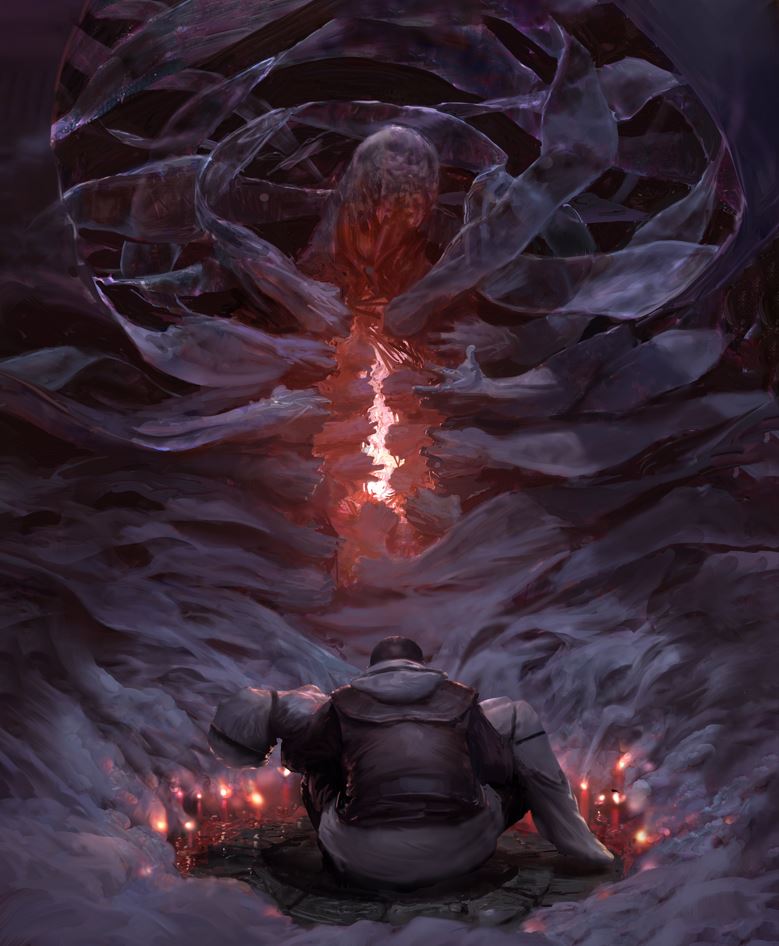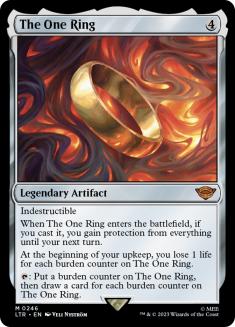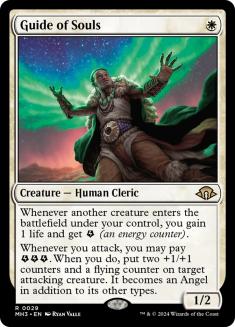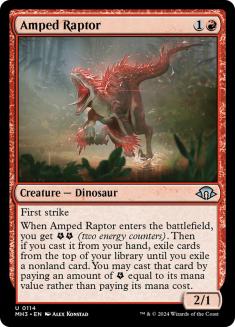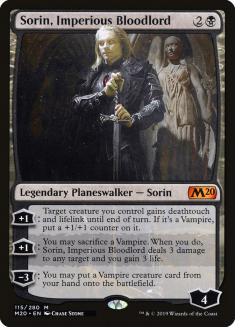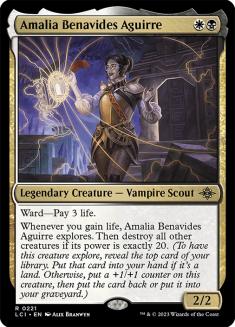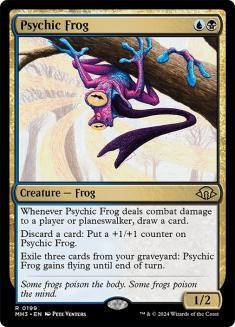Dan Musser and Carmen Klomparens of the Magic: The Gathering Play Design Team joined Blake Rasmussen on today’s episode of Weekly MTG to discuss yesterday’s major changes to the Banned & Restricted list.
Little time was needed to speak about the banning of Nadu, Winged Wisdom following one of the most warping seasons of Modern in the game’s history. Nadu was a problem, it was a mistake (as noted by Michael Major’s article on Daily MTG dissecting what happened in design with the problematic Bird). and it had to leave the format. This thought was echoed by Rasmussen as he reiterated why Wizards of the Coast (WotC) will be sticking with its new schedule for B&R updates and not shifting to something like having one each month.
“Nadu is an outlier. We don’t want to make all of our decisions based on what happened with Nadu,” Rasmussen said. “We haven’t had a Nadu event in quite some time, a true format-breaking, 30-percent play outlier, that was just released, it doesn’t happen that often. The B&R announcements are constant, Nadu happened once.”
This left more room to talk about the banning of Grief in Modern, something that could have happened earlier due to is negative play experiences. The effort and mana investment for the combo of a free Grief and a one-mana spell to bring it back on the first turn was too much for the format to live with as players continuously lamented the frustrations of starting games with so few cards in hand.
“I don’t think Grief is particularly fun, and fun is an important thing we weigh when making decisions,
Musser said. “While its presence isn’t that of Nadu, we think people are tired of starting the game at five cards. And this is our fault. If it didn’t cost zero mana plus a card that costs one mana maybe it would be more reasonable.”
From the banned cards to the cards and archetypes that dodged bans, the discussion moved to Boros Energy and The One Ring. While Boros Energy is winning a lot and even hanging around in a format with Nadu, the ripple effects of banning Nadu could create a format where the deck is not a meta tyrant. It’s possible many Boros Energy predators have been pushed out of the format because they couldn’t compete with Nadu and will keep the deck in check post-Nadu. The Play Design Team is going to let it exist in the real world now before taking action as the deck at least encourages interactive gameplay and produces games that go longer than what the current Modern format presents.
As for The One Ring, it is a powerful play that can slot into many decks, but being a relevant play higher on the mana curve allows it be a strong card with more wiggle room than cards that cost zero or one mana. In addition to costing four mana, the card also leads to longer games and more decisions.
“The One Ring is omnipresent but it isn’t clear that it is making a net negative impact on Modern,” Klomparens said. “There are a lot of high resource strategies that struggle to compete in Modern. The One Ring is a massive pressure in the other direction. If it is strong, it is a really fun thing to be strong, and at the end of the day, something is going to be the strongest.”
Musser also commented on the often-suggested idea of restricting The One Ring, even saying that the concept isn’t completely off the table.
“When you make a decision to make a format better, you really don’t want to take account of lore, especially if there is clear delineation where only Vintage has restricted cards.” Musser said. “It’s super flavorful and a cool idea, so it’s not a zero percent chance to happen. I want to be clear that we will ban The One Ring if we decide it’s a problem. It’s not immune to our decision making process, it just hasn’t been clear enough.”
Talks on Pioneer were a bit more cut and dry with banning Sorin, Imperious Bloodlord and Amalia Benavides Aguirre. The Amalia deck is an adored creature-combo archetype, but leads to too many tournament logistical issues from the many additional draws it produces. In addition to leading to longer tournament rounds, the deck is also too powerful, too resilient, and too consistent. Sorin had to go because Rakdos Vampires quickly became the most popular and powerful deck following it winning the Pro Tour after its debut. The move to ban Sorin over Vein Ripper came down to hitting the unfair play pattern that could lead to other problems in future Vampire designs.
Musser did mention Treasure Cruise is always on the watch list when it comes to Pioneer, but it wasn’t overly powerful at the moment. The Play Design Team also wanted to refrain from taking too much action on the format at once, as hitting three top decks at once could cause too many unpredictable meta shifts. Klomparens also pointed out that Pioneer is the last home for Treasure Cruise and it is a card players enjoy casting, similar to Brainstorm in Legacy.
Speaking of Legacy, Grief also got the axe there. This was a less controversial move than the banning of the Elemental Incarnation in Modern. Grief decks were seeing play rates in Legacy that rivaled some of the most powerful decks in the history of the game.
“Grief is one that most of the Legacy community has known is too strong for a while now, there just hasn’t been a great window to ban it before now,” Klomparens said. “It is something we really had to just get out, it was hitting all-timer numbers, so it was low-hanging fruit to ban.”
Klomparens also addressed Psychic Frog, yet another Legacy staple that came from a Modern Horizons product seeing high play rates.
“Psychic Frog is strong but it’s really hard to disentangle how much of that is on the back of how strong the Greif package is, so it isn’t clear to us if it is problematically strong or is going to take up a metagame share that denotes a ban,” Klomparens said. “In a world where you can afford to be more reactive, I am a little optimistic to see its stock go down a bit, but I would not be surprised if we had to action on it in the future.”
Read the official B&R announcement and the article detailing Nadu from Daily MTG.

